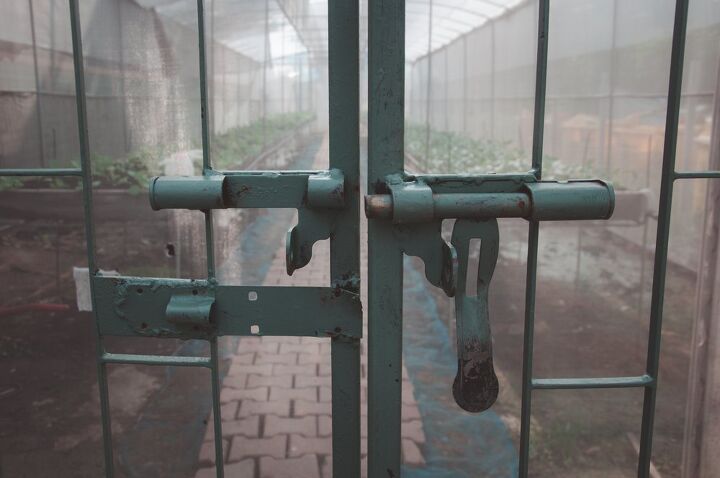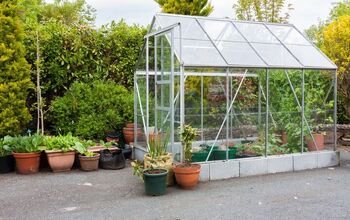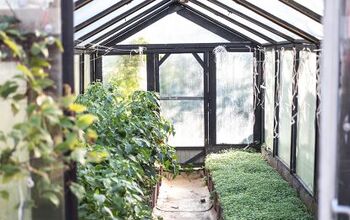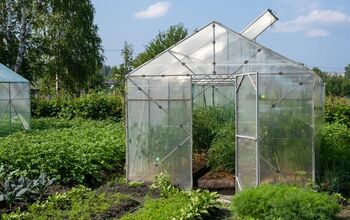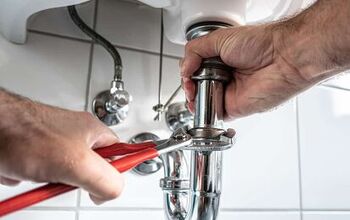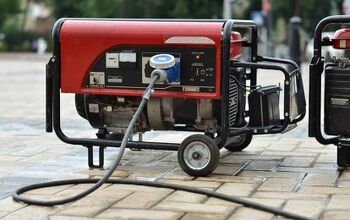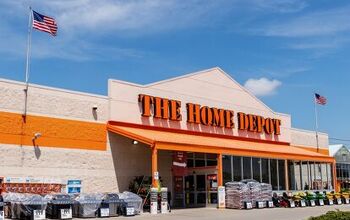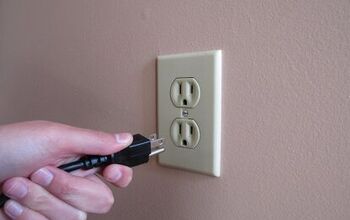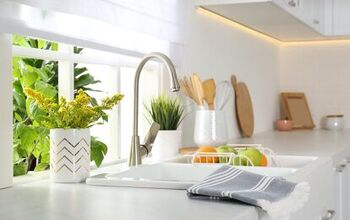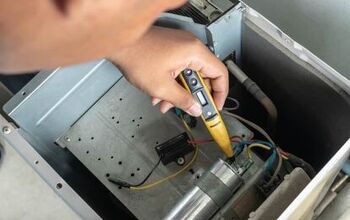How To Burglar-Proof A Greenhouse

People build greenhouses for many reasons, such as supporting their hobby, extending the growing season, and earning extra income. No matter what your reason is, you most likely would do whatever you can to protect your greenhouse from burglars. You’re not alone if you’ve ever wondered how to burglar-proof a greenhouse.
The best way to burglar-proof a greenhouse is to install motion-activated lights and a camera system. A burglar alarm connected to a 24/7 monitoring service can also help you secure your greenhouse. It’s also a good idea to keep your valuables away from the windows and install keyed or password-protected locks on the doors.
Depending on your budget, you can also fortify your greenhouse by building a fence around it. Follow along as we explore how to burglar-proof your greenhouse.
How Do I Secure My Greenhouse?
Securing a greenhouse is all about trying to get into the mind of a burglar. That may sound odd, but it helps to understand what kind of security weak points burglars look for. Burglars are opportunistic criminals, and they may see your greenhouse as a chance to earn some money.
Burglar-proofing a greenhouse can be costly, but there are some of the methods that are cheap and easy. You can protect your greenhouse from burglars using several tried and true methods, including:
1. Install Motion-Activated Lights
Putting a big spotlight over your greenhouse may deter some burglars. However, keen burglars may realize that the light is staying on all night, and that it doesn’t indicate that someone is watching. Conversely, the sudden burst of light of a motion-activated light may make a burglar think twice about their actions.
Motion-activated lights are quite common in home security, and that’s because they can startle just about anyone. People even use motion-activated lights to deter common pests, like raccoons, stray cats, and opossums. You can burglar-proof your greenhouse if you put a motion-activated light above the door or on the roof.
Any person or animal who enters the motion-activated light’s radius will be startled by a burst of light. Not only will it surprise the would-be burglar, but it will also alert you to someone’s presence if you see it. In that case, you can call the police as needed if you feel unsafe.
2. Lock It Up
While many people use a greenhouse for fun, many others rely on the plants in their greenhouses for their income. No matter which category you fall into, you should lock your greenhouse up when you’re done with it for the day. You can easily install a cheap padlock on the average greenhouse door, and that’s more than enough for a hobbyist greenhouse.
However, you may need a more elaborate lock system if you use your greenhouse for commercial purposes. In that case, you can benefit from using a keyed lock or combination lock, as they’re harder for burglars to bypass. Some people install sliding doors on their greenhouses, especially in commercial greenhouses.
In that case, you must modify the door, drill a hole in the top, run a rope or cable, and hang a padlock. It’s best to keep this in mind while building your greenhouse, but it’s never too late to install locks.
3. Hide Your Valuables
Some gardening equipment is expensive, and burglars who target a greenhouse probably know that. They’re counting on you to leave valuable items out in plain view. Ideally, you should conceal all your valuable items, so you don’t pique any burglar’s interest.
That includes motorized equipment and power tools, as they have a lot of resale value. This also includes high-value plants, as this type of theft has soared since 2020. That’s because rare, variegated plants sell for a lot of money online, so thieves view them as cash crops.
Be careful and avoid posting pictures of rare, expensive plants online, or else you may draw negative attention. Keep your common plants in plant views and hide your rare plants to make your greenhouse look as unassuming as possible.
4. Install Cameras
In a perfect world, nobody would need to protect a greenhouse from burglars. However, we instead live in a world where you can benefit from putting a camera in or around your greenhouse. Not only will this help burglar-proof it, but it will also improve home security.
That’s especially true if your greenhouse is located behind your house. That way, you can point the camera toward the back of your home, so it covers your home and the greenhouse. Your best bet is to install a camera over the greenhouse’s door or on the roof.
Otherwise, you can mount a camera equipped with a motion-activated light on the roof. Depending on the camera, you may be able to connect it to your existing security camera setup. Today, you can find cheap security cameras for $30 to $100, but you must pay extra for 24/7 monitoring.
5. Install An Alarm
If motion-activated lights and cameras don’t scare burglars away, then an alarm will. Modern security alarms are as loud as they are terrifying, and they can deter the average burglar. Today, most commercial garden centers and greenhouses rely on burglar alarms to keep their businesses safe.
Greenhouse hobbyists should do this as well, especially if they keep valuables in the greenhouse. You can install a basic security alarm for as little as $150, but that’s not enough for a commercial greenhouse. Even if you grow crops as a side hustle at home, you should consider getting a professional burglar alarm system.
This typically costs up to $1,000, minus the cost of extra services. For example, it costs an average of $40 per month to have a security service monitor your burglar alarm. In that case, the service will contact the local authorities if your alarm rings for a certain amount of time.
6. Obscure The Windows
Covering the windows in a greenhouse may sound like a bad idea. After all, most people want as much sunlight as possible shining through a greenhouse from all angles. However, you don’t necessarily need to obscure all the windows to deter burglars.
Instead, you can simply cover the windows that people can most easily look into from public areas. For example, you can put a film over a window that is visible from the street. That way, not everyone can see into your greenhouse, and you won’t completely block the sun.
If you must obscure all the windows for security purposes, you may still enjoy some sunlight. For example, many greenhouse roofs let sunlight shine down from above. Some well-placed mirrors can help you boost natural sunlight and keep your plants happy without enticing burglars.
7. Fence It In
A greenhouse is a big investment, so you must do everything you can to protect it. That includes fencing it in, which may be necessary if your yard doesn’t feel very private. This is especially true in areas with lots of foot traffic, high crime rates, and little privacy, so building a fence may be necessary.
A fence can not only help burglar-proof your greenhouse, but also keep strangers out of your yard. You can expect to spend between $1,000 and $7,300 to build a fence, and as you can see, the cost varies widely. That’s because factors like materials, yard size, and the cost of labor will ultimately determine how much you spend.
For example, you may spend between $10 and $70 per linear foot for a chain link or wrought iron fence, respectively. Luckily, you can increase your home’s value by building a fence, so it’s a long-term investment that will pay off.
Summing It Up
You can burglar-proof your greenhouse with padlocks, dead bolts, and motion-activated lights. Hide your valuables, like rare plants and expensive gardening equipment, so burglars can’t see them from the windows. It also helps to put a security film over the windows, install cameras, and set up an alarm system.
Related Guides:

Nick Durante is a professional writer with a primary focus on home improvement. When he is not writing about home improvement or taking on projects around the house, he likes to read and create art. He is always looking towards the newest trends in home improvement.
More by Nick Durante



